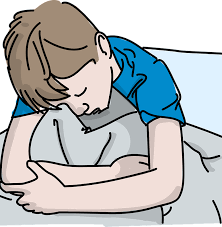There are 10 types of diseases that are most easily transmitted in our environment today!!!
There are many infectious diseases in this world. The definition of an infectious disease is an infection caused by viral, bacterial, fungal and parasitic microorganisms. The characteristic of an infectious disease is that it can be transferred to other people who are healthy, causing people who were previously healthy to become sick.
The disease is very dangerous because the death rate is quite high. Certain infectious diseases that lead to death and disability, although the consequences are less severe than the first. Infectious diseases that rarely cause death or disability, but can become epidemic causing material and health losses.
Infectious diseases can spread directly or indirectly. Direct transmission occurs through physical contact, touching or kissing the sufferer, the air when the sufferer coughs or sneezes, or contact of body fluids with the sufferer's urine or blood.
Of the many infectious diseases, some are the most contagious. Know the types of diseases that are most easily transmitted, characteristics of infectious diseases, along with steps you can take to protect yourself from contracting them.
Influenza
The flu is a disease caused by a virus that continues to mutate, making it difficult for the immune system to detect. Common symptoms of the flu are muscle aches, coughing, sneezing, stuffy nose, headache, fatigue and fever.
Although classified as an infectious disease, currently the flu is considered harmless. However, what needs to be watched out for is the mutation of the flu-causing virus which then causes far more dangerous diseases, such as bird flu.
Transmission: Directly when splashes of water from the mouth droplets hit other people—when sneezing, coughing or talking. Indirect transmission occurs when you touch a surface or object that has been contaminated with the flu virus, then your hands touch your mouth and nose so that the virus enters the body.
Prevention
Keep your distance from people who have the flu.
Clean your hands frequently with soap or hand sanitizer.
People who are suffering from the flu should wear a mask so they don't spread the virus to others.
Practice proper coughing and sneezing ethics, namely covering your mouth and nose with your elbow when you cough or sneeze.
Take care of your immune system so that you don't catch the flu virus easily.
tuberculosis
This infectious disease of the respiratory tract is caused by the bacterium Mycobacterium tuberculosis. The symptom or characteristic of this infectious disease is a cough with phlegm that lasts for more than two weeks. In addition, people with tuberculosis will also lose their appetite, experience weight loss, sweat at night, and be tired.
Transmission
Tuberculosis is transmitted through the air. If you are close to someone with tuberculosis, you are at high risk of contracting it when the person breathes or coughs. Another way of transmission of tuberculosis is if you use items that were previously used by tuberculosis sufferers.
Prevention
Not close to people with tuberculosis. If forced, wear a mask to protect your respiratory tract.
Avoid touching or using objects that were previously used by people with tuberculosis.
Received BCG vaccination (as a toddler).
Strengthen your immune system by eating nutritious food and exercising regularly.
Best Regards
By @lingkar-photo



It is obvious that you've put in a lot of effort in putting this together...
Kudos.
I think a better way to approach this would be to take one of these illnesses and go to town on it.
It makes for a richer and more reliable article.
Thank you @drceeyou
Malaria is also part. That's why we must keep our environment clean